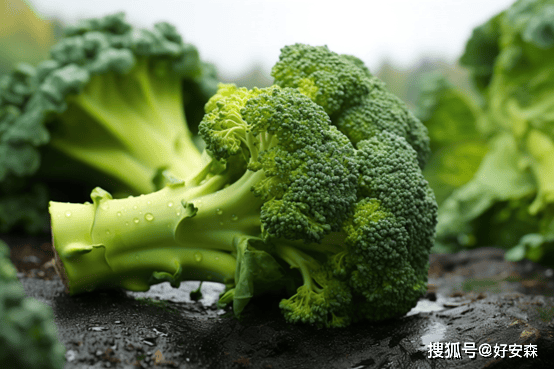Some foods do help with blood sugar, also known as lowering sugar foods, but because the lowering sugar ingredients are natural components, and some foods have varying digestion times in the body, such as fruits take 30 minutes to 1 hour, and vegetables take 45 minutes to 2 hours, making it difficult to maintain these effective ingredients at a constant blood concentration for a long time. Therefore, they must be consumed regularly to enhance the lowering sugar effect.
So, lowering sugar foods need to be eaten regularly and in moderate amounts, and if you are using lowering sugar drugs, they cannot replace medications.
According to the body’s metabolic patterns, middle-aged and elderly people with normal blood sugar should eat lowering sugar foods 2 to 3 times a week; those with abnormal sugar tolerance should eat lowering sugar foods at least once a day, and diabetes patients should eat lowering sugar foods with every meal to enhance pancreatic function and prevent diabetes complications.
Today, let’s continue to see what these lowering sugar foods in this series are?
Broccoli
Calories: 33 kcal/100g
Glycemic Index: <15 Low
High in fiber, controls appetite, stabilizes blood sugar
Key point for blood sugar: Dietary fiber
The "vegetable king" broccoli stabilizes postprandial blood sugar.
Broccoli is rich in dietary fiber, which can help control appetite, slow down the digestion of food in the intestines, and help control postprandial blood sugar.
A study in Japan concluded that the average nutritional value and disease prevention effects of broccoli far exceed other vegetables.
Broccoli contains sulforaphane, which can activate proteins in the body, enhance the antioxidant capacity of cardiovascular cells, and help break down and remove cholesterol.
Recommended recipes:
Stir-fried broccoli with carrots, stir-fried broccoli with shrimp, stir-fried broccoli with shiitake mushrooms.
Dos and Don'ts:
Whether cold or stir-fried, broccoli should not be blanched, boiled, or salted for too long, as this can easily destroy and deplete the nutrients in broccoli.
Celery
Calories: 14 kcal/100g
Glycemic Index: <15 Low
Improves microcirculation in the body.
Key points for blood sugar: Dietary fiber, flavonoids
Celery, high in dietary fiber
Flavonoids in celery can improve microcirculation in the body, promote the conversion of sugar components in food into muscle and tissue in the body, thereby helping to lower blood sugar.
Celery is a high-fiber vegetable that can improve sugar metabolism in diabetes patients, enhance insulin sensitivity, and lower blood sugar.
Celery has a good diuretic effect, which can help eliminate excess uric acid from the body and assist in the auxiliary regulation of gout in diabetes patients.
Recommended recipes:
Stir-fried celery with dried tofu, stir-fried celery with squid, stir-fried celery with tofu skin.
Dos and Don'ts:
Celery is cool and slippery in nature, and is not suitable for those with spleen and stomach deficiencies and loose stools. Celery has blood pressure-lowering effects, so people with low blood pressure should use it with caution.
Cabbage
Calories: 17 kcal/100g
Glycemic Index: <15 Low
Heat-clearing, detoxifying, fat-reducing, and sugar-lowering
Key points for blood sugar: Dietary fiber, vitamin C
Why cabbage is better than white cabbage
Cabbage contains rich dietary fiber that can inhibit the absorption of sugars and promote gastrointestinal motility, slowing the rise in blood sugar after meals, making it suitable for frequent consumption by diabetics.
Vitamin C in cabbage participates in internal sugar metabolism, synergizing with other nutrients to maintain blood sugar balance.
Cabbage's zinc content, far exceeding that in meat and eggs, not only lowers blood sugar but also helps diabetics delay and prevent cardiovascular disease.
Recommended recipes:
Sautéed cabbage, cabbage stewed with tofu, stir-fried cabbage hearts with dried shrimp.
Dos and Don'ts:
For making cabbage kimchi, it should be fermented for at least one month before consumption. Kimchi fermented for fewer than 15 days has the highest nitrite content, which can be carcinogenic, so it should be consumed sparingly.
Spinach
Calories: 24 kcal/100g
Glycemic Index: <15 Low
Enhances pancreatic insulin function
Key points for blood sugar: Chromium, dietary fiber
Spinach helps diabetic patients prevent and treat constipation
Spinach contains spinach saponins, which have antibacterial activity, can stimulate pancreatic secretion, and lower blood sugar.
The rich iron content in spinach can promote the conversion of carotene into vitamin A in the body, help prevent and improve iron deficiency anemia symptoms.
Recommended recipes:
Garlic spinach, spinach in broth, spinach with scrambled eggs.
Dos and Don'ts:
Patients with pulmonary tuberculosis, nephritis, and kidney stones should not eat spinach. Spinach should be blanched before cooking to reduce oxalic acid content and not affect calcium absorption.
Eggplant
Calories: 21 kcal/100g
Glycemic Index: <15 Low
Reduces complications
Key points for blood sugar: Manganese, selenium
Eating eggplant in moderation helps prevent diabetic eye complications.
The manganese element in eggplant helps maintain normal sugar and fat metabolism in the body, promotes the synthesis and secretion of insulin, and reduces the occurrence of complications.
The skin of eggplant contains rich vitamin P, which protects microvessels, increases micro-vessel resistance, protects cell and capillary walls' normal permeability, and enhances micro-vessel elasticity.
Regular consumption of eggplant can prevent diabetic retinal bleeding and diabetic hypertensive retinopathy caused by diabetes.
The skin of eggplant contains a large number of nutrients, and some beneficial compounds are also higher in eggplant. When eating eggplant, it is best to eat it with the skin.
Recommended recipes:
Minced eggplant, steamed eggplant with sauce, cold eggplant mash.
Dos and Don'ts:
Eggplant easily absorbs oil when cooking or frying, causing an excessive intake of oil, leading to high blood sugar. There are two tips to avoid eggplant absorbing too much oil: before cooking eggplant, steam it in a steamer, then cook; when stir-frying eggplant, do not add oil at first, dry fry it on low heat, wait until the moisture is evaporated and the eggplant becomes soft before stir-frying with oil.
Which foods can effectively help control high blood sugar?


